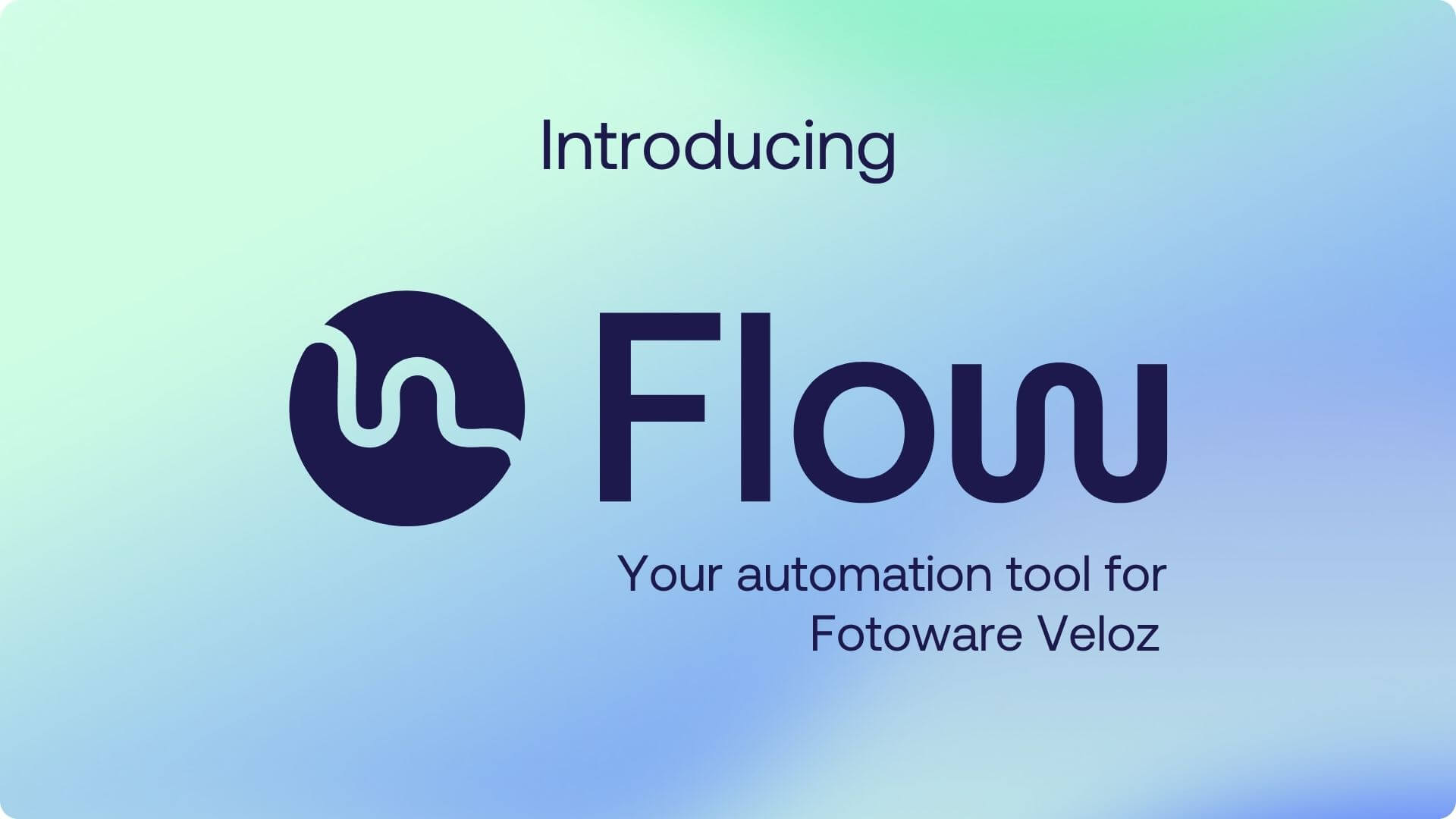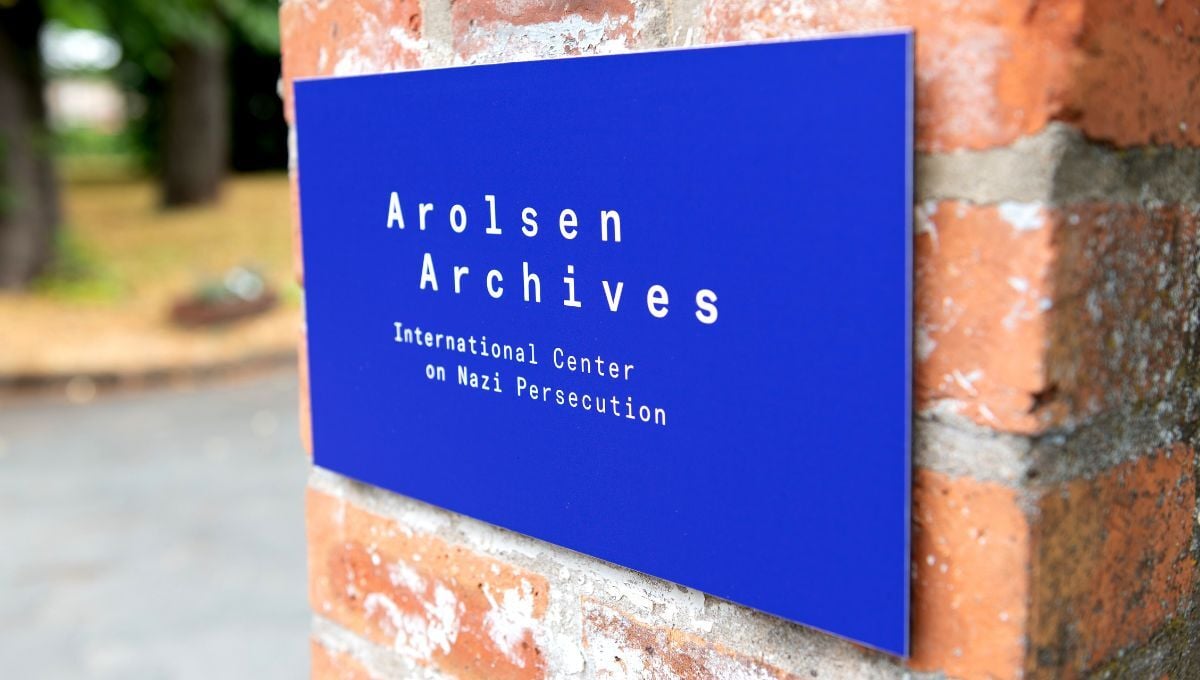
The complete guide to Digital Asset Management
Digital Asset Management (DAM) is the process of organizing, storing, and distributing digital files like images, videos, and documents from a central location. This complete guide explains how DAM works, its benefits, key use cases, and what to consider when choosing the best Digital Asset Management solution for your organization.
In this guide to Digital Asset Management (DAM), you will discover what DAM is, understand the benefits, and explore its various use cases and integrations across different sectors.
This article will provide valuable insights into the importance and the functionality of DAM solutions, and helps you make informed decisions when choosing the best DAM software for your needs.
Table of Contents
- What is Digital Asset Management (DAM)?
- What is a digital asset?
- What Digital Assets Management software does
- The benefits of a Digital Assets Management system
- Users of Digital Asset Management
- Common use cases for using a Digital Asset Management system
- Digital Assets Management integrations
- Why the Management of Digital Assets is important
- Trends in Digital Asset Management
- Buying Digital Asset Management software
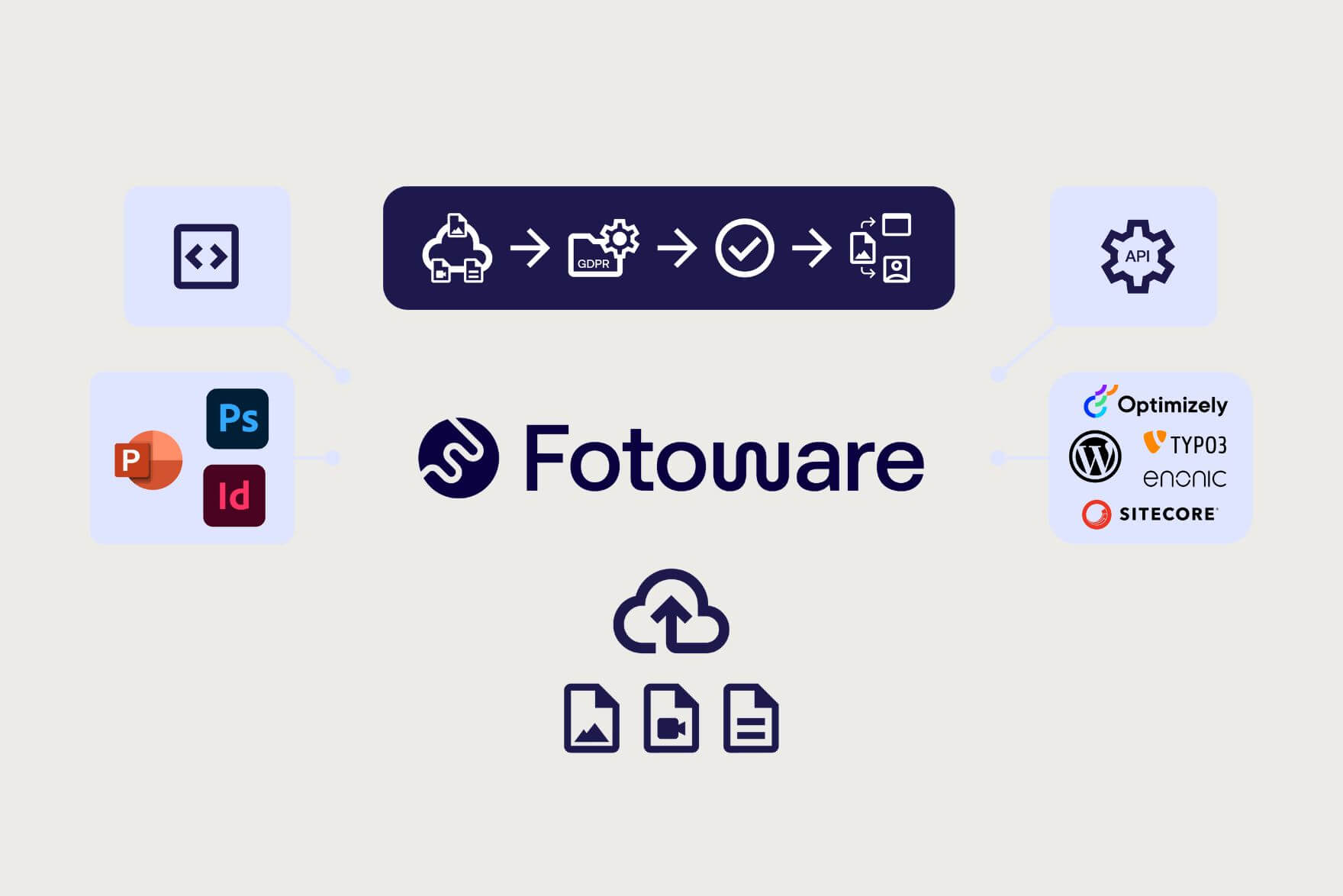
What is Digital Asset Management (DAM)?
Digital Asset Management (DAM) is a systematic approach to managing digital content files like images, videos, documents, and creative files throughout their lifecycle within an organization.
DAM involves storing, organizing, securing, and sharing digital assets to enhance collaboration and streamline workflows across teams.
By implementing Digital Asset Management software, companies create a centralized storage space that provides employees and external stakeholders with efficient access to a brand’s digital asset library. This technology not only simplifies the retrieval and distribution of digital content files but also automates tasks such as publishing images and managing permissions to protect intellectual property.
A DAM system can be crucial for improving efficiency, ensuring consistent asset usage, and maximizing the value of digital content across various channels and projects, ultimately leading to tangible business growth and competitive advantage.
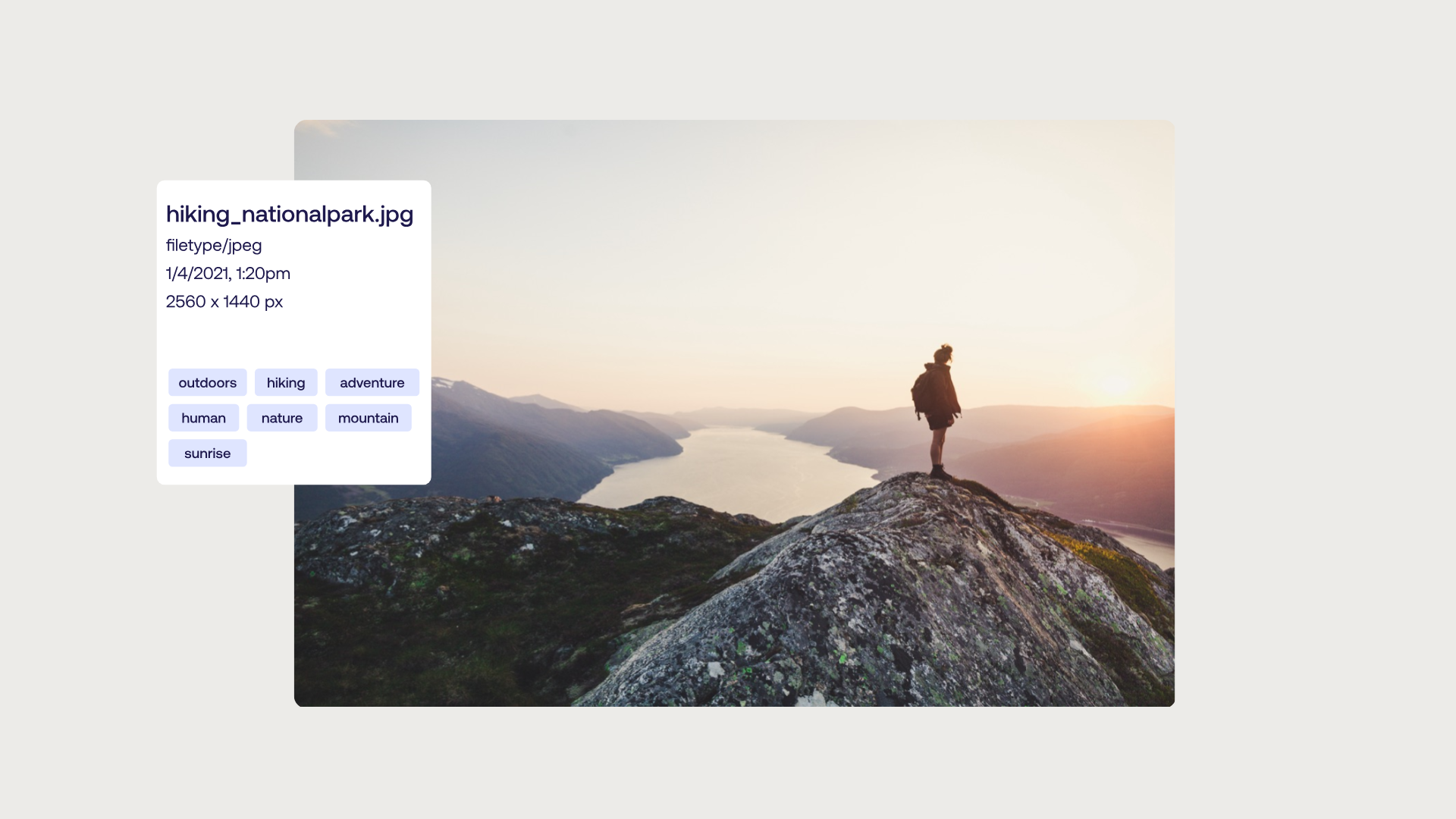
What is a digital asset?
Digital assets refer to content files that organizations legally own and manage in digital format.
These files are crucial for all types of organizations, driving marketing campaigns, product launches, sales, events, public relations, employee training, and product documentation.
Digital assets can also be the heart of more specific cases such as:
- digital art collections,
- historical archives,
- documentation of processes and equipment,
- and even digital evidence in law enforcement.
Managing digital assets involves organizing, storing, and retrieving digital files efficiently. A DAM system streamlines this process by enabling easy metadata tagging, advanced search capabilities, and secure storage, ensuring your team can quickly locate and use the right files.
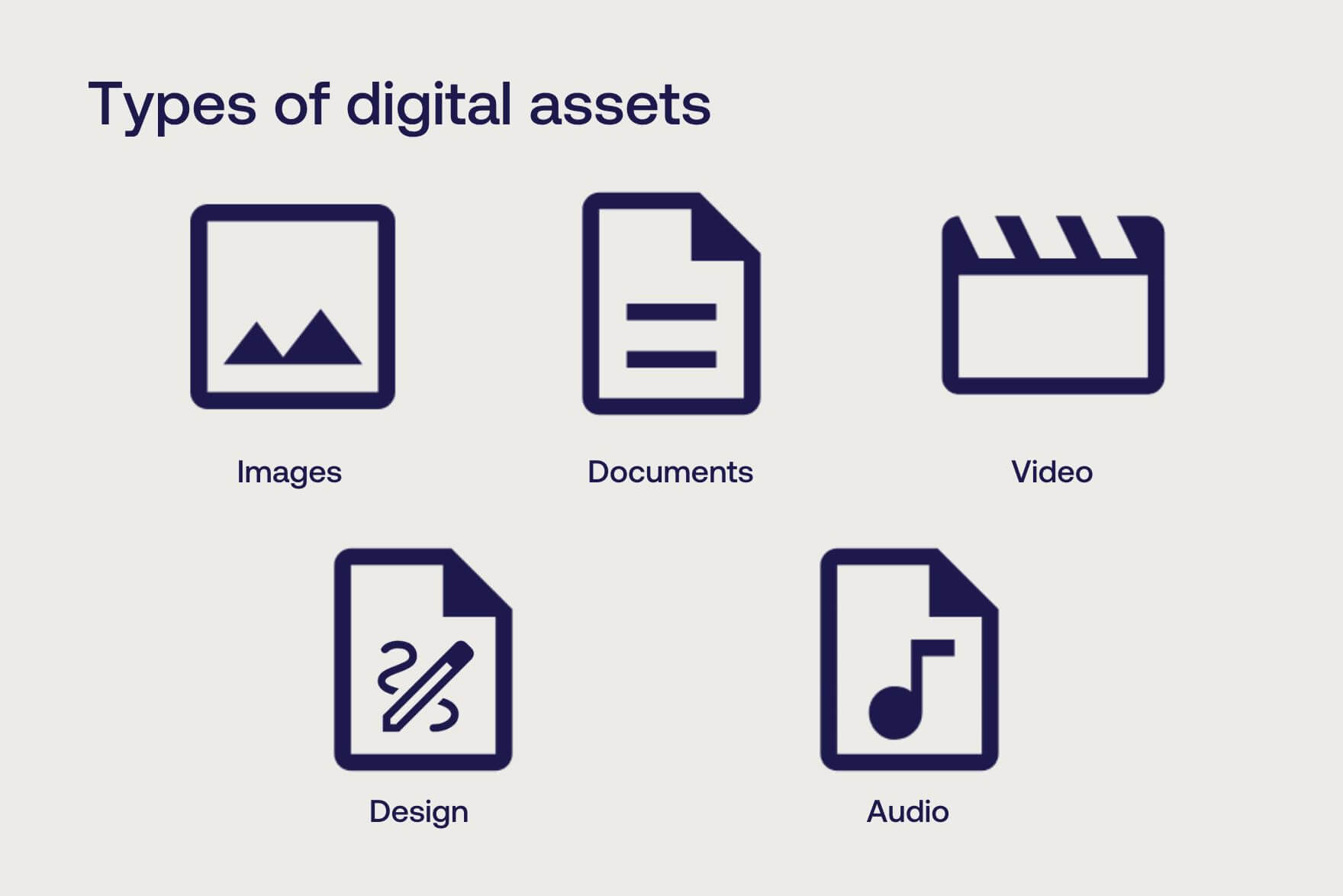
Examples of digital assets encompass a wide array of media types such as:
- images (JPEG, PNG, GIF, TIFF, RAW),
- graphic design files (PSD, EPS, AI, SVG), or
- audio files (MP3, WAV),
- videos (MP4, AVI, MOV, WMV),
- documents (PDF, Word, Excel, PowerPoint).
Each type serves specific organizational needs—from enhancing ecommerce visuals to supporting research endeavors.
Understanding and managing digital assets is crucial for increasing efficiency and staying competitive in today’s business landscape.
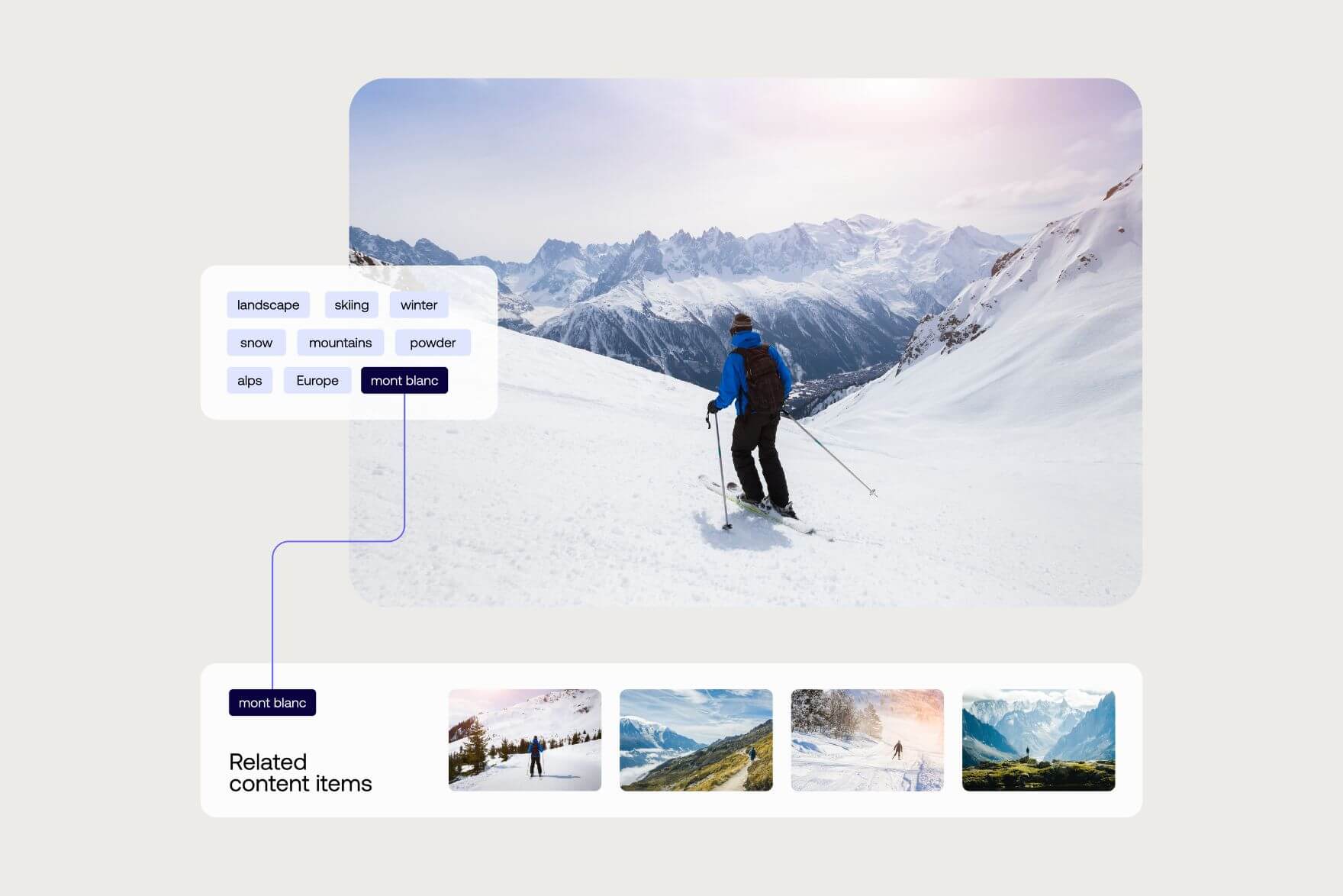
What Digital Assets Management tools do
DAM software serves as a comprehensive software solution for managing digital assets within organizations.
Unlike a simple image bank, a DAM solution offers functionalities to make asset use and workflows more efficient. It organizes digital assets into a structured archive for quick and accurate retrieval and distribution based on metadata.
This enhances accessibility and makes it easy for teams to collaborate by helping users find and share assets effortlessly.
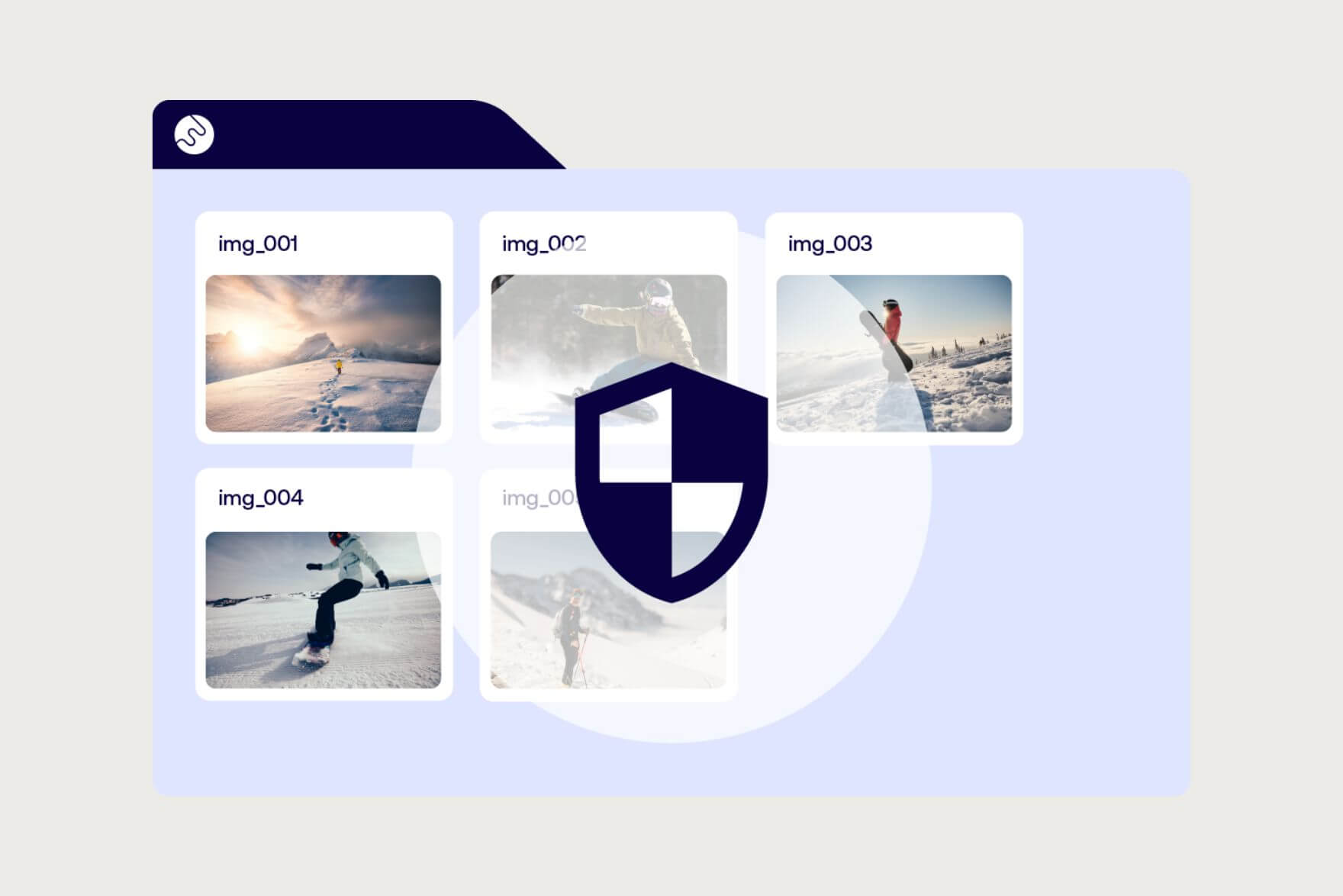
Additionally, DAM tools can automate repetitive tasks such as file conversion, resizing, archiving, or applying metadata, thereby streamlining production workflows and saving time.
Another aspect of DAM is its ability to enforce security measures, including access controls and digital rights management to protect sensitive assets from unauthorized use.
Moreover, a DAM system provides analytics and reporting capabilities that enable organizations to track asset performance, usage trends, and compliance with regulatory requirements.
Overall, DAM software empowers organizations to maximize the value of their content, improve efficiency, and maintain control over digital assets and their lifecycles.

Looking for a DAM? Get the ultimate DAM buyer's guide
Get all the information you need for purchasing a Digital Asset Management solution with this free guide.
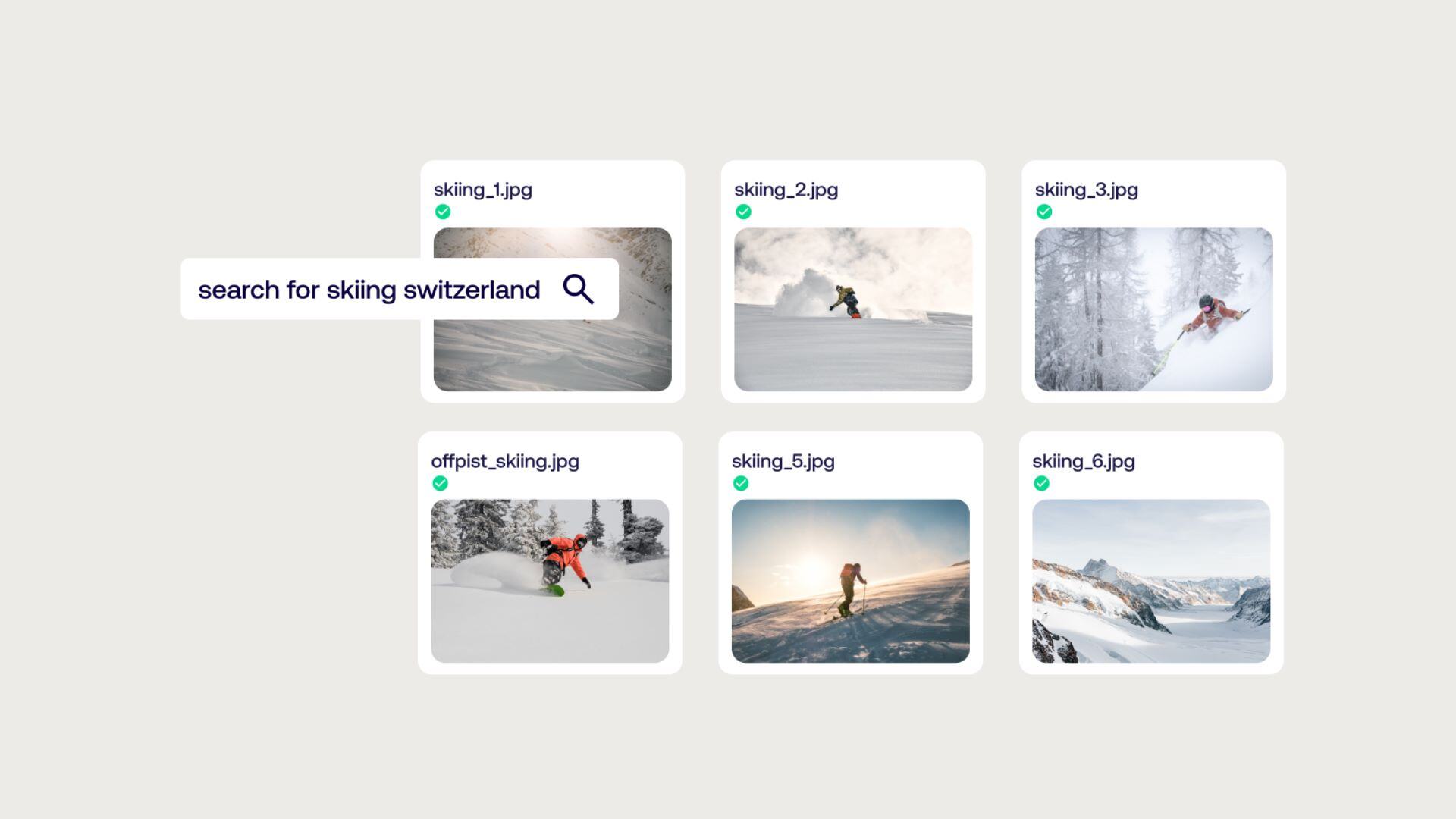
The benefits of Digital Assets Management
Improved efficiency and productivity
A DAM system greatly enhances efficiency by centralizing and organizing DAM assets, making it much easier for users to access, use, and re-use the files they need. Instead of wasting time sifting through multiple locations or disorganized folders, employees can quickly locate the required assets from a single, well-organized archive.
DAM systems also provide a structured approach to streamlined, metadata-driven workflows. This is a tool to always provide users with the right files at the right time while also automating repetitive, manual tasks such as resizing, cropping, and organizing digital assets.
These simple but effective optimizations free up valuable time for employees, allowing them to focus on their core tasks, improving overall efficiency.
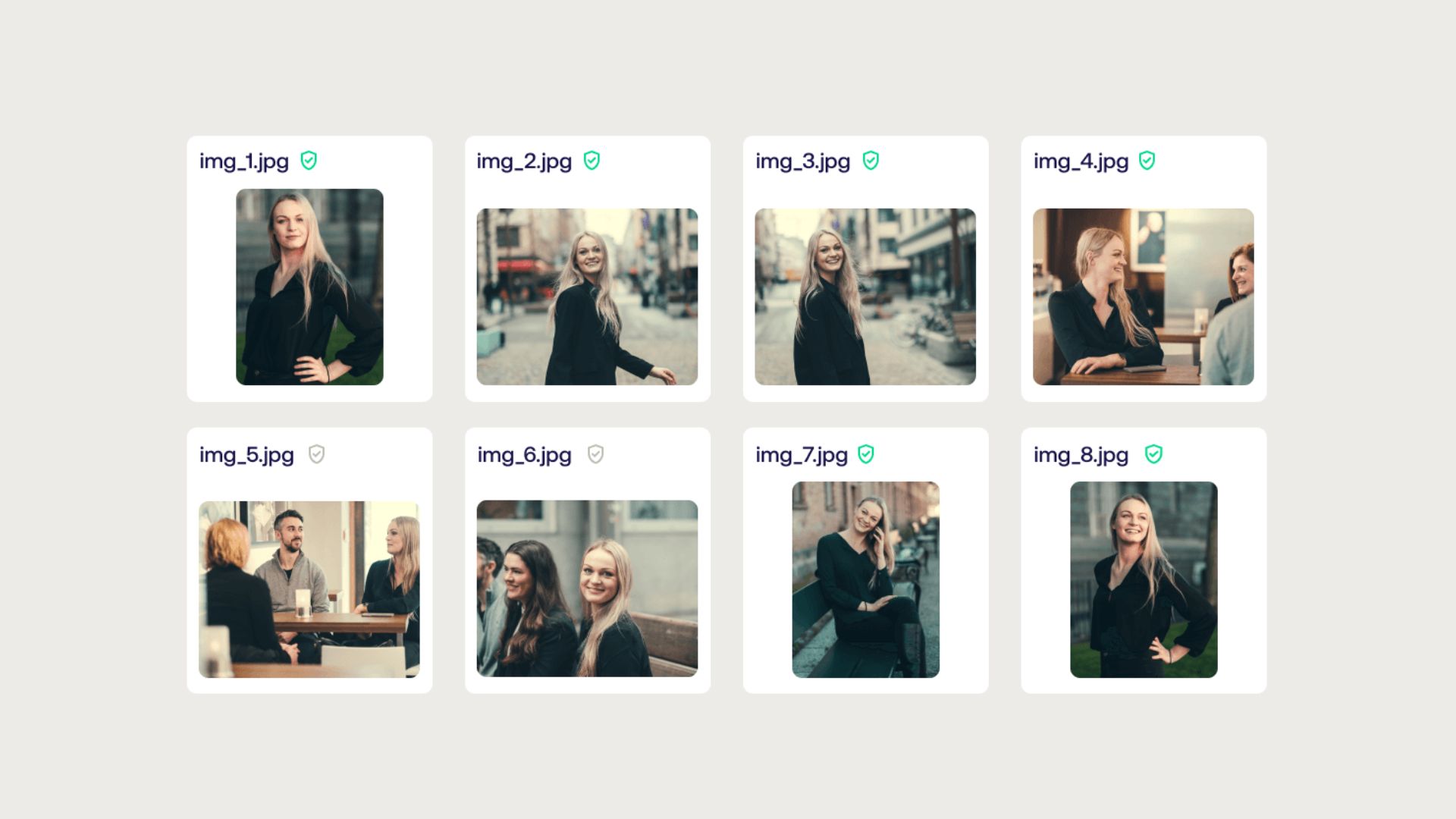
Legal compliance
DAM systems helps organizations ensure legal compliance by managing digital assets in accordance with copyright laws, usage rights, General Data Protection Regulation (GDPR), and other legal requirements.
By controlling access permissions and embedding licenses, rights, or consent in an asset’s metadata, DAM solutions safeguard organizations from potential legal issues related to unauthorized use of digital content, not only mitigating the risk of fines, but also reinforcing ethical standards and professional integrity.
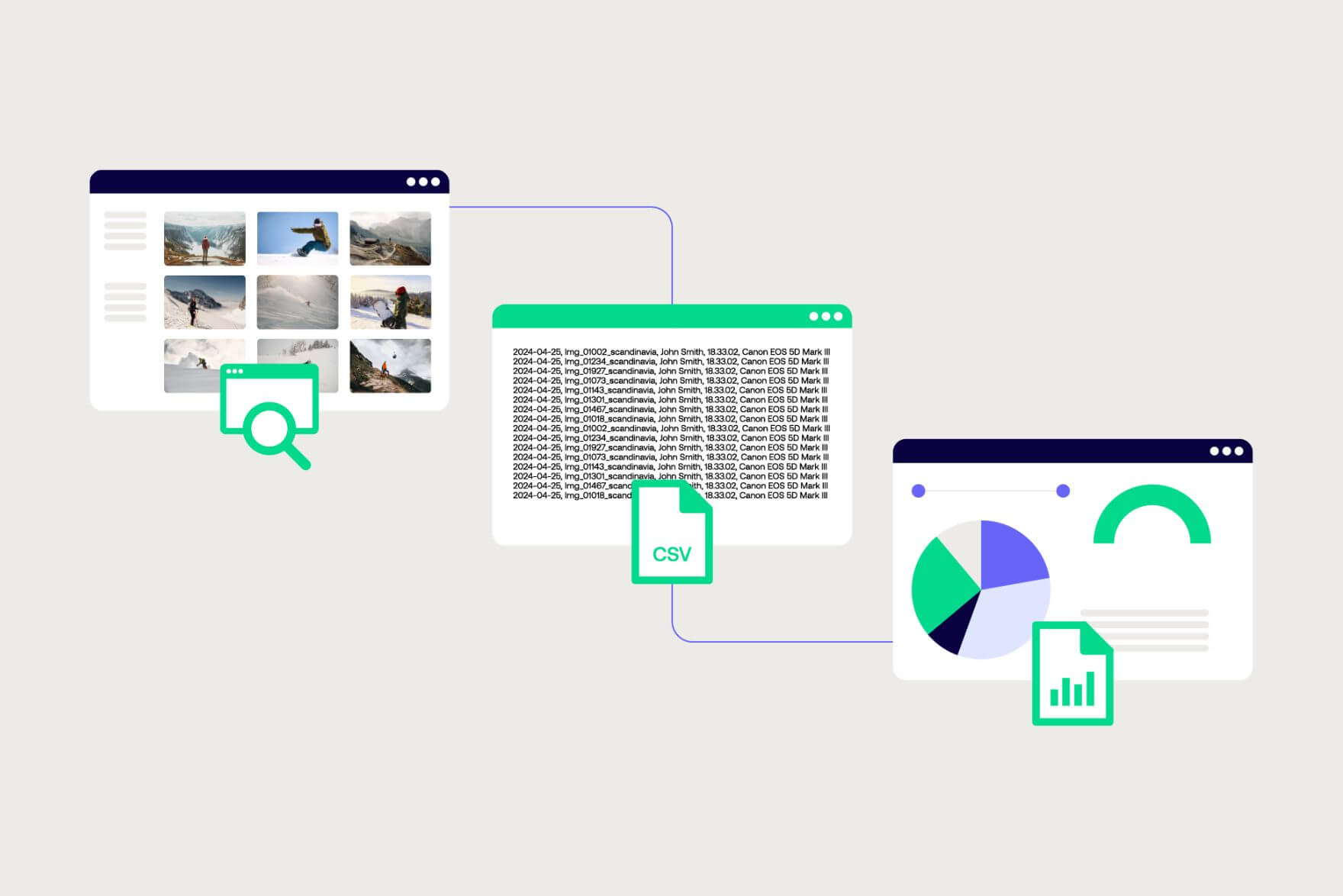
Better use of assets
Effective Digital Assets Management allows organizations to track and report on the usage of their DAM assets, making it easy to identify which assets are being utilized most and which could be used even better.
With these insights and proper metadata management, organizations can optimize their use of files.
Managing DAM assets ensures that valuable content can be leveraged to its fullest potential, considering the complete asset lifecycle and the re-usability of content. By understanding usage patterns, companies can make informed decisions about content creation and distribution.
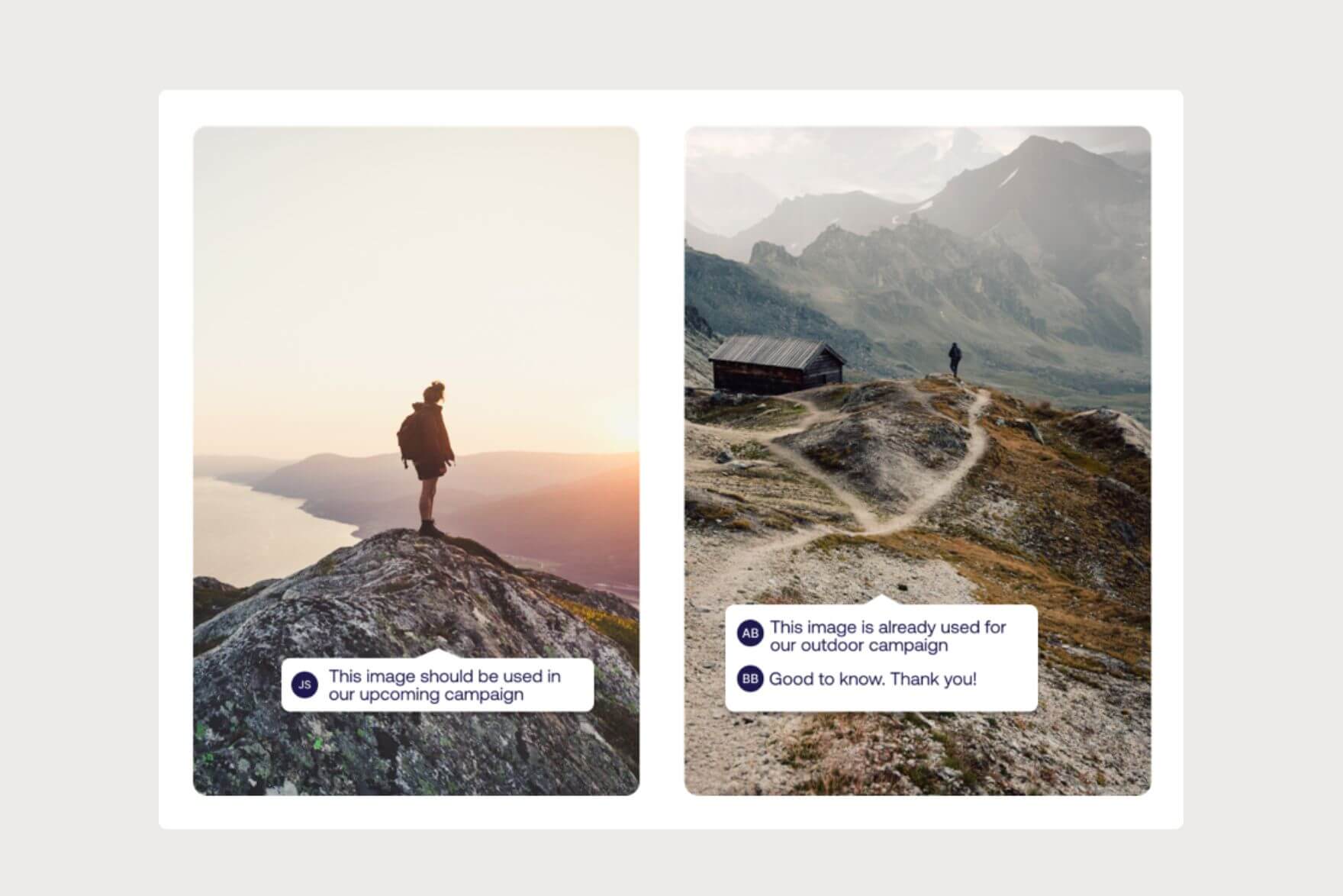
Better collaboration
A DAM system fosters better collaboration by providing secure access to digital assets. It allows internal teams, external partners, agencies, freelancers and more to access and work with digital assets at the same time.
This makes it easier for teams to collaborate on projects, share feedback, and ensure everyone is working on the latest version of an asset. Features like visual markers, role-based access control, comments, annotations, and approval workflows further streamline the process, aligning all team members regardless of their location.
Improved security
Security is a major concern for any organization dealing with digital assets, and DAM solutions address this by providing possibilities for fine-grained access control to assets and robust security features.
Additionally, cloud-based DAM systems also automatically back up assets to secure locations. This protects against data loss and also helps organizations comply with security and privacy laws, providing peace of mind that their valuable digital assets are safe.

Brand consistency
Maintaining a cohesive brand image is crucial for building and reinforcing brand identity, and a DAM system can play a significant role in this process.
By acting as a centralized archive for all digital assets, DAM ensures that all stakeholders access the latest, approved versions of logos, graphics, and marketing materials.
This helps maintain a uniform brand image and messaging across all channels, which is essential for effective brand management and customer perception.

Intro to Digital Asset Management and how it works
Watch a recorded session walking you through DAM basics, benefits, and implementation.
/marketing-team-brand-management.jpg)
Digital Asset Management users
DAM is essential for users across various sectors and functional areas, including:
Marketing and Communication teams
These teams use DAM to efficiently manage assets for campaigns, promotions, and branding.
Key benefits include:
- centralized storage,
- quick file retrieval,
- seamless collaboration, and
- streamlined approval workflows.
- ensures compliance with regulations like GDPR,
- controls asset rights, and
- maintains consistent branding.
By simplifying the uploading, managing, and distributing of visuals, DAM enhances campaign effectiveness and enables teams to quickly respond to market changes, driving better marketing results.
LEARN MORE: 6 challenges all marketing teams face when managing digital assets

Creative and Design teams
Designers and creative professionals rely on Digital Assets Management solutions to collaborate on visual assets, manage design files, and maintain a uniform brand identity.
For creative teams, quick access to the right DAM asset can dramatically speed up time-to-market.
DAM systems make creative work easier by providing tools for reviewing assets, giving feedback, and sharing files seamlessly. This enables creating shared working spaces with external creators or agencies, ensuring efficient collaboration and maintaining design standards.
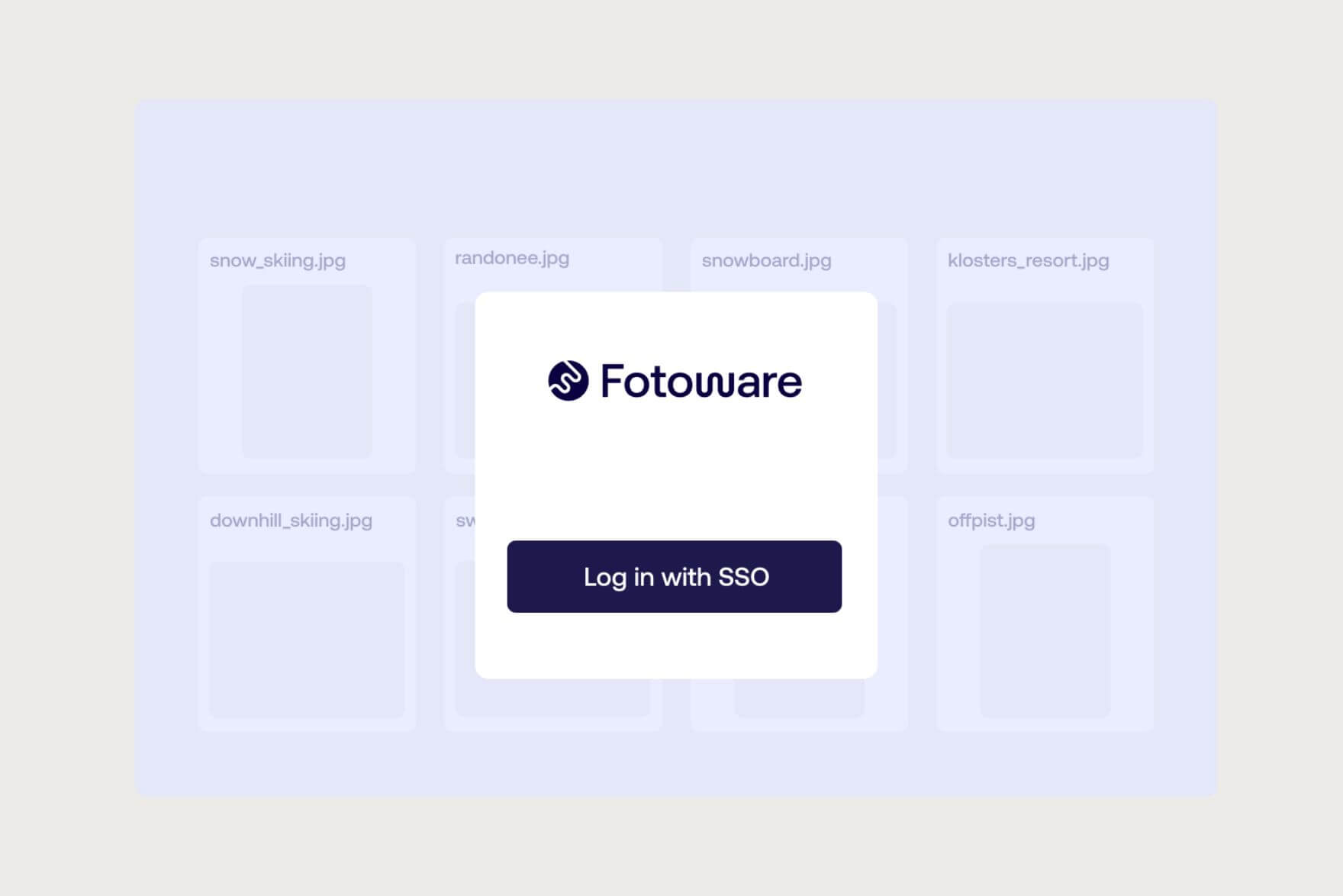
IT department
IT departments play a crucial role in implementing and maintaining DAM systems to support organizational objectives.
IT professionals ensure the scalability, security, and integration of DAM solutions with existing enterprise systems, such as Content Management Systems (CMS), Product Information Management (PIM) systems, creative and productivity tools and e-commerce platforms.
By integrating DAM with core IT infrastructure, organizations optimize asset management capabilities, streamline data workflows, and enhance efficiency.

Archivists and Gallerists
Archivists in GLAMs (Galleries, Libraries, Archives, and Museums), educational institutions, and public institutions use DAM systems to improve how they preserve, organize, and access their collections.
- Digitization: By digitizing and storing high-quality versions of physical artifacts, documents, and media, as well as photography from events and exhibitions, DAM helps preserve valuable cultural and historical assets.
- Organize and categorize: Robust metadata management and categorization tools make it easier for archivists to organize large collections systematically.
- Public access: Public-facing portals enhance accessibility, allowing researchers, students, or the public to interact with their assets.
- Digital rights management: Additionally, DAM systems help archivists manage intellectual property rights and usage permissions, ensuring appropriate use of copyrighted materials.
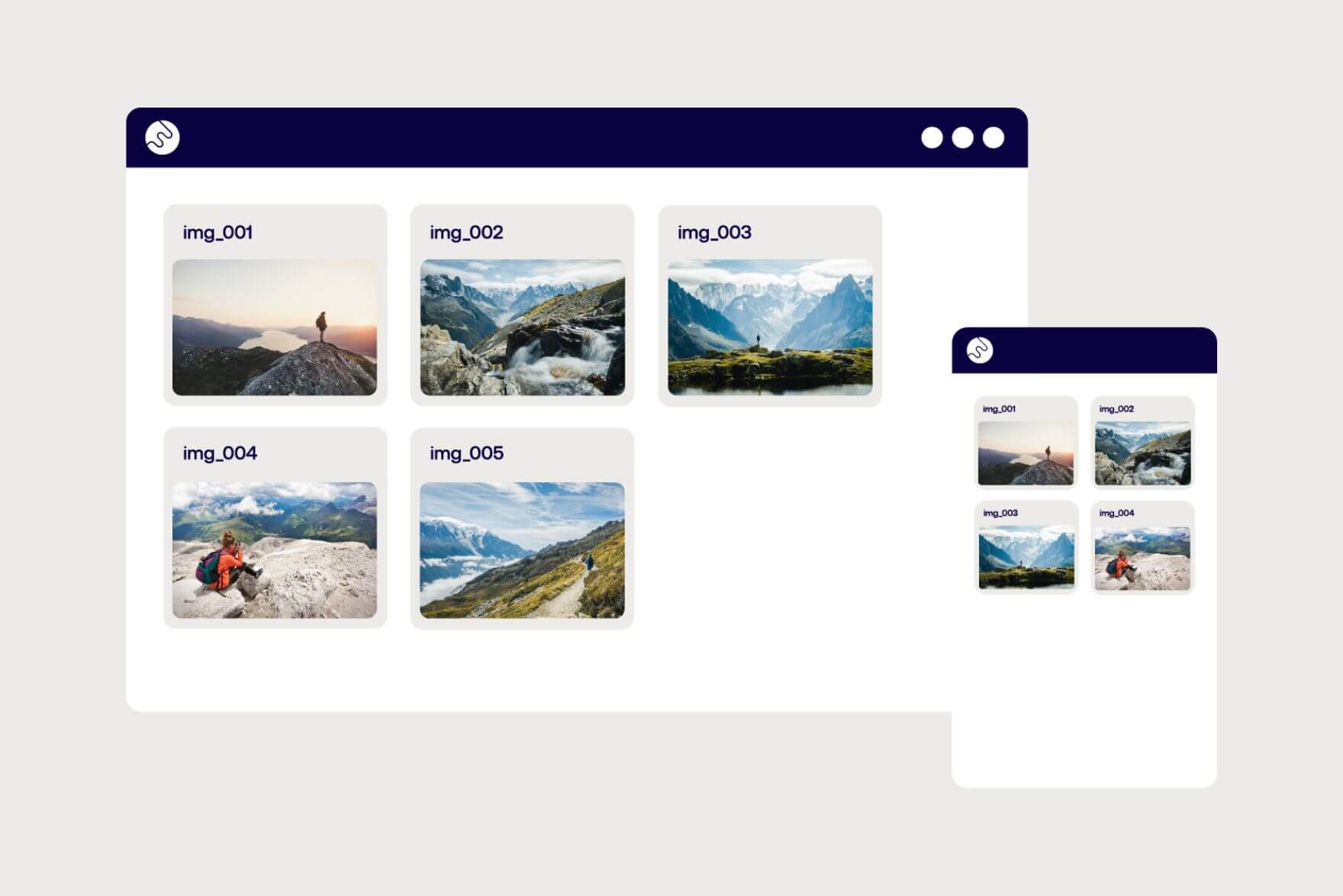
Sales and Business Development
Sales teams use DAM solutions to access product images, videos, and sales materials for presentations, proposals, and customer communications.
Thanks to simplified access to up-to-date DAM assets, even sales professionals working remotely can enhance client engagement, deliver compelling presentations, and reinforce brand messaging across sales channels.

HR and Legal
HR and Legal teams need to stay on top of copyrights and licenses, ensuring that digital assets are used within their legal constraints and revoking access to assets when licenses expire.
- Rights and license management: DAM systems simplify rights and license management by tracking asset usage and expiration dates through embedded metadata, ensuring compliance with rules and regulations.
- Consent management: Moreover, with the increasing importance of data privacy regulations like GDPR, DAM solutions help organizations comply by documenting consent for images of people, revoke assets when consent is withdrawn, and securely managing sensitive information.
This level of security and compliance capability is crucial for mitigating legal risks and maintaining trust within the organization and with external stakeholders.
/digital-evidence-management-police.jpg)
Police and other law enforcement professionals
Law enforcement professionals make use of DAM systems to efficiently manage and secure digital evidence and operational assets.
- Centralized storage and easy retrieval: By centralizing storage of multimedia evidence such as from body-worn cameras, surveillance system footage, and mobile devices, DAM ensures easy retrieval and integrity of crucial data. This centralized approach enhances the accuracy and speed of investigations.
- Access control: DAM also aids in compliance with legal standards and privacy regulations, providing secure access controls to ensure that only authorized personnel can access sensitive information.
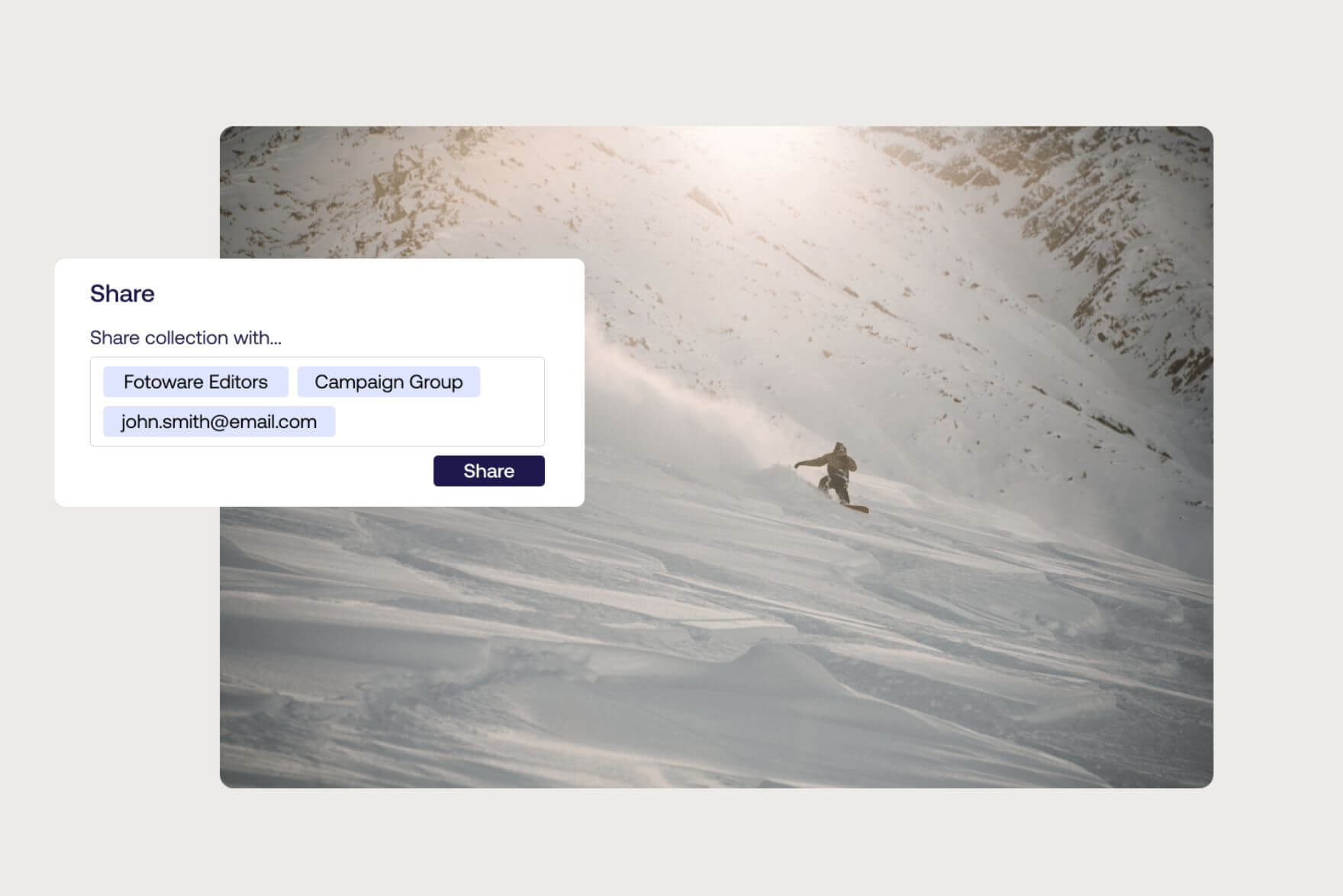
External stakeholders
A Digital Asset Management solution also simplifies collaboration and file sharing with external partners such as agencies, freelancers, influencers, the press, or even the whole public.
It provides version control, asset approval status, and user group permissions, preventing the sharing of unapproved or outdated content.
Externals can access specially set-up for a tailored experience, making collaboration and file sharing smooth and efficient.
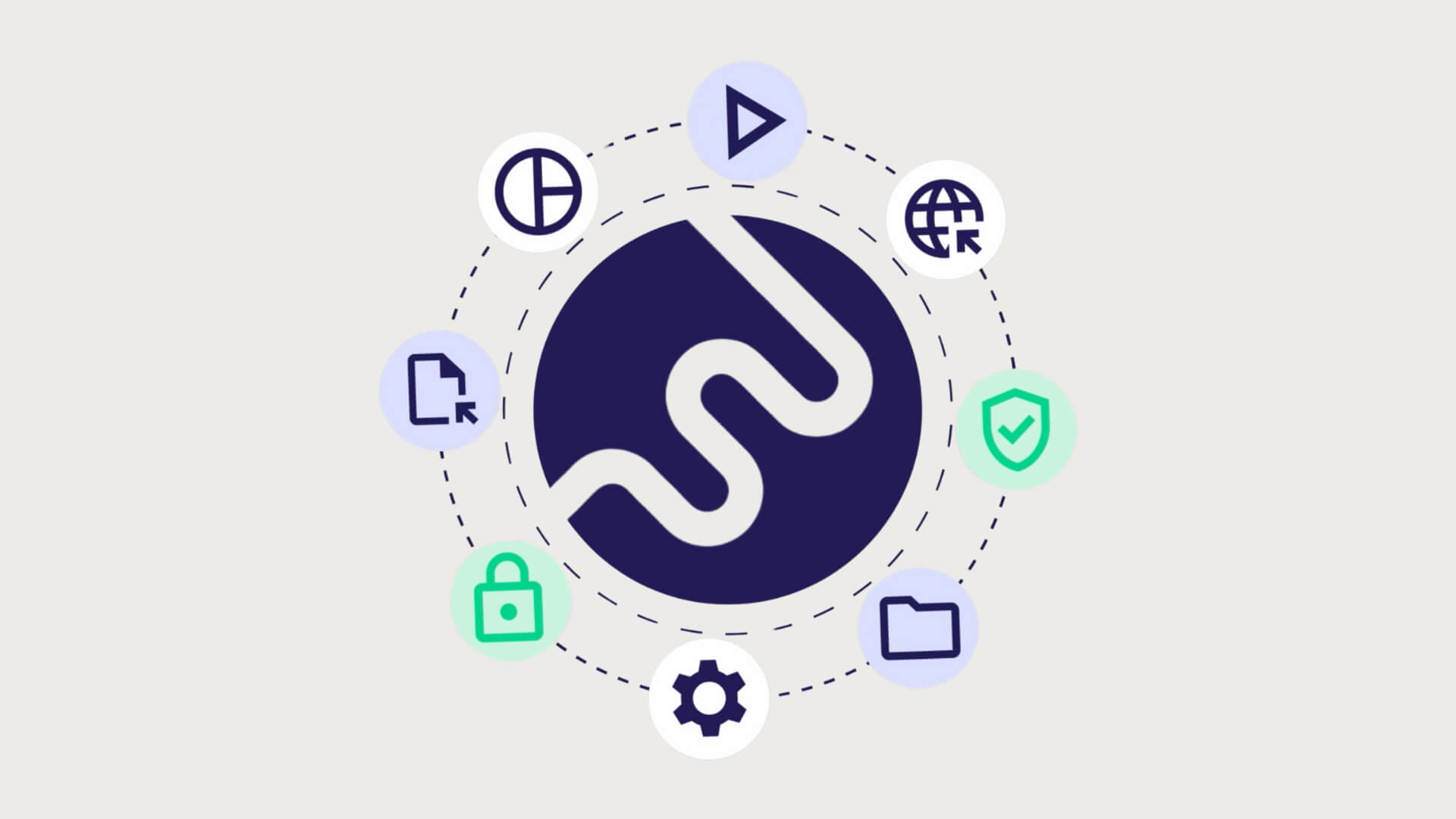
Common use cases for a Digital Asset Management system
Omnichannel Content Delivery
A DAM solution at the core of a content ecosystem can facilitate the distribution of digital assets across multiple channels, supporting an omni- or multi-channel content strategy.
In a digital-first world, brands must deliver consistent and timely content across websites, social media, email campaigns, and more. A DAM system can automate this process by providing Content Delivery Network that ensure the latest versions of digital assets are instantly available across all platforms.
Integrations eliminate the need for manual updates and reduce the risk of using outdated content, enhancing brand consistency, increasing overall efficiency, and improving the customer experience across all digital touchpoints.
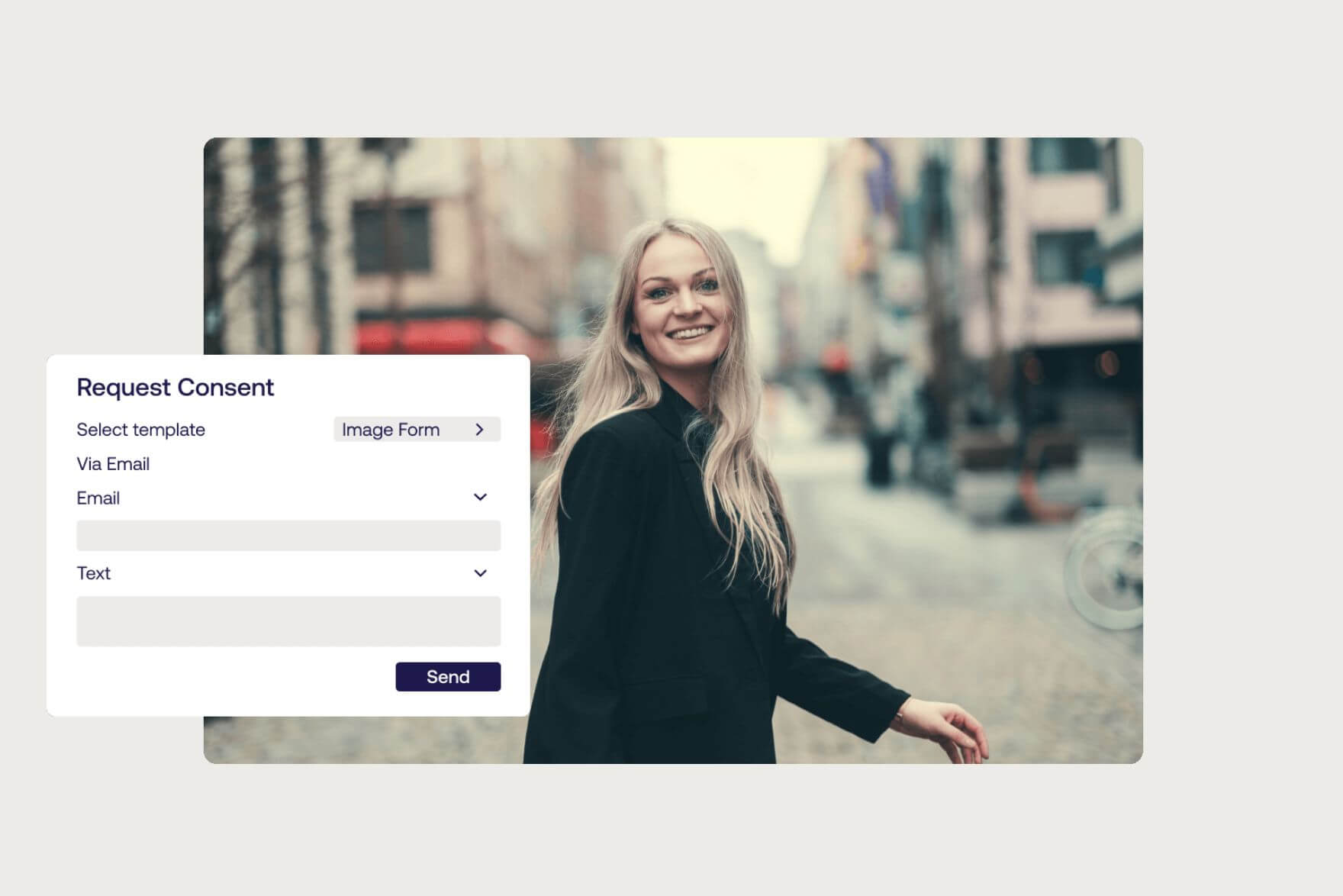
GDPR and Consent Management
Compliance with GDPR (General Data Protection Regulation) and consent management regulations is essential for organizations handling images of people, which count as personal data. A DAM system can help manage these compliance requirements by controlling access to digital assets and ensuring that all usage adheres to privacy regulations.
With features that apply usage policies to files, a DAM system can help in ensuring that digital assets are used in accordance with GDPR guidelines. This reduces the risk of legal issues and helps organizations maintain customer trust by protecting the privacy of their data.
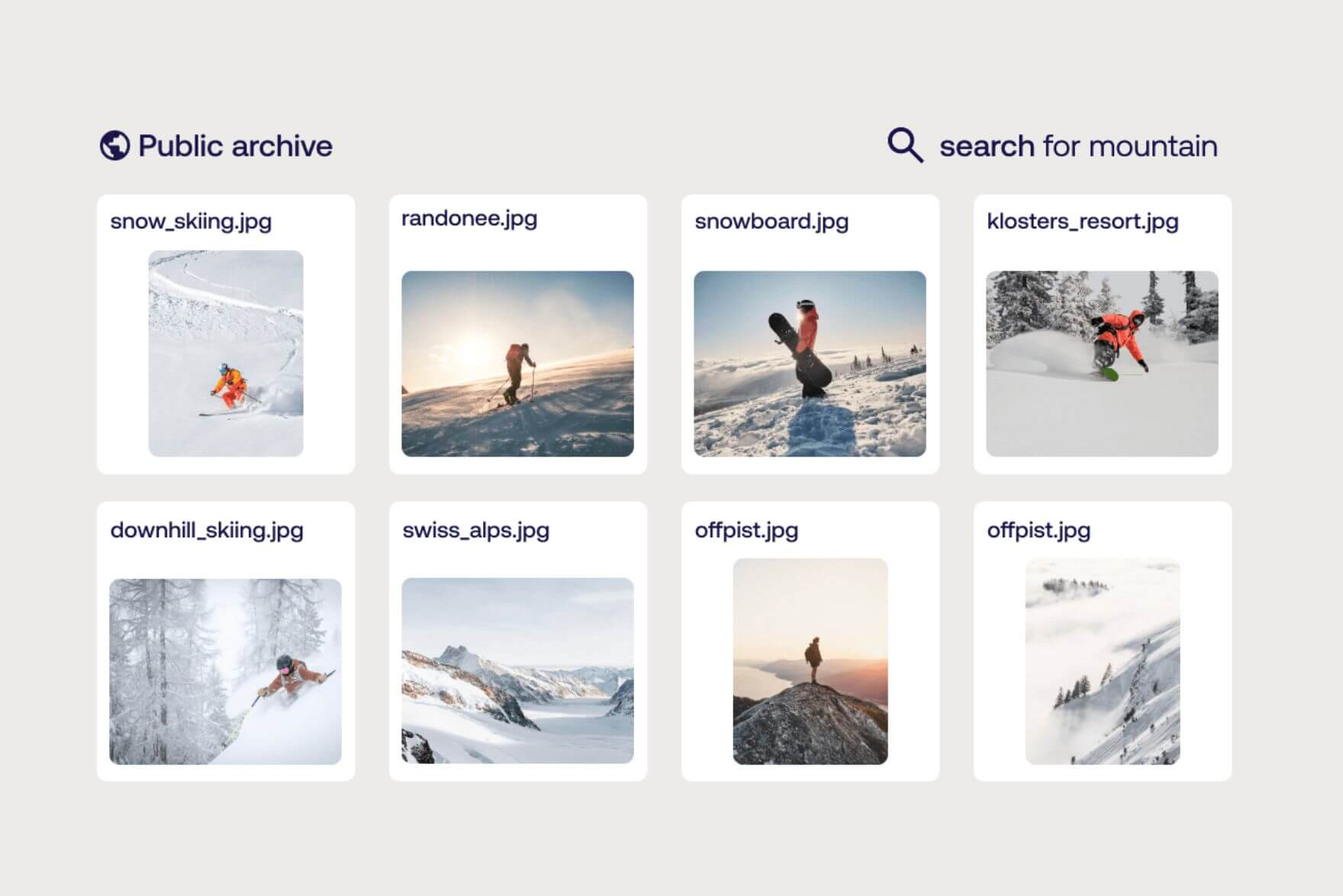
Archiving and Categorization
A DAM system uses advanced metadata capabilities for robust archiving functionalities, allowing organizations to categorize and store assets in a structured manner.
Metadata provides detailed information about each asset, such as creation date, author, usage rights, and content type, enabling precise categorization and efficient search functionality for users.
Proper categorization also aids in compliance with legal and regulatory requirements, ensuring that digital assets are managed responsibly throughout their lifecycle.
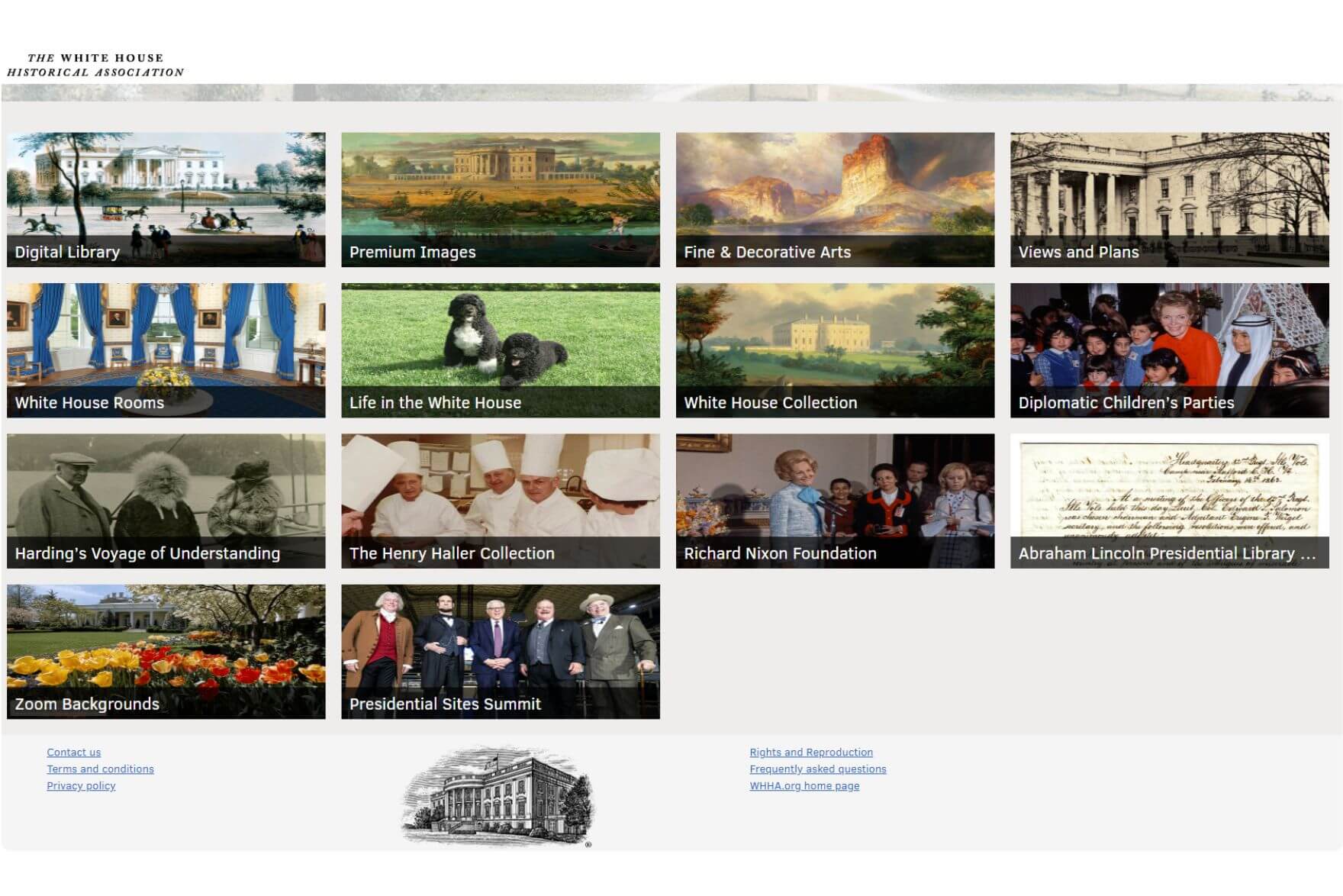
Collection Management
Collection management is essential for institutions such as museums, galleries, archives, and libraries (GLAMs).
A DAM system helps these institutions manage and preserve their digitalized collections. Collections often include high-resolution images, videos, and metadata associated with artworks, historical artifacts, and literary works. Centralizing these digital assets makes it easier for curators, researchers, and educators to access, organize, and share content items.
Additionally, features like metadata management, automated workflows, and secure sharing capabilities support the cataloging, exhibition, and educational use of content items. As a result, DAMs improve public access and engagement with cultural and historical resources.

License and Rights Management
Managing licenses and rights for digital assets is a complex but necessary task for many organizations.
A DAM solution can streamline license and rights management by tracking usage rights, expiration dates, and permissions for files, visually indicating the permission status of each asset. This ensures that all digital content is used legally and within the terms of its license agreements, reducing the risk of copyright infringements and associated penalties.
By optimizing the management of rights with DAM, organizations can avoid legal pitfalls and ensure that all assets are used according to rules and regulations.
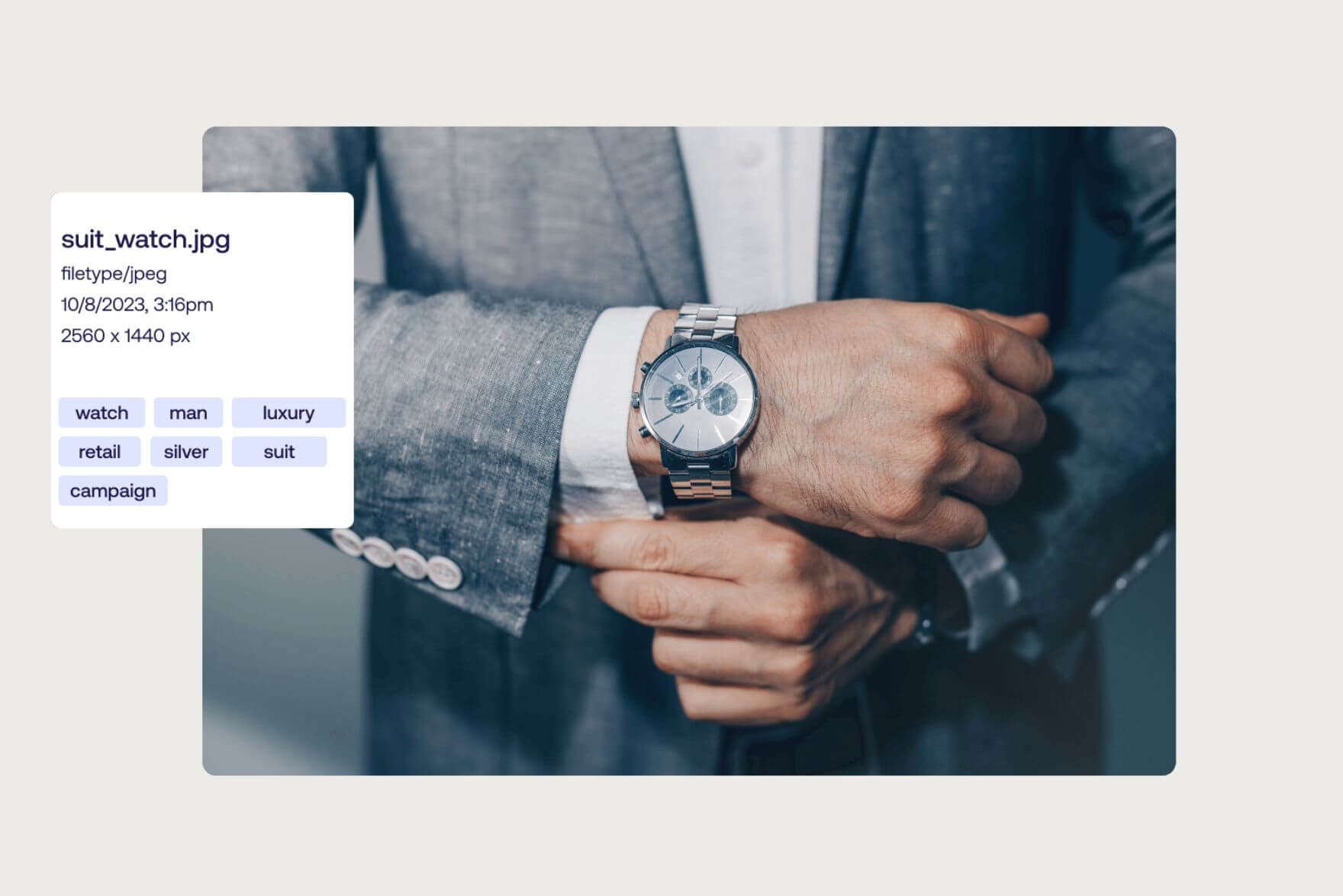
Product Content Management
Properly managing product content is crucial for businesses with extensive product catalogs.
A DAM system helps organize product-related files such as images, videos, and product descriptions in one central place. This ensures that marketing and sales teams can easily use up-to-date product content for campaigns, catalogs, websites, listings, and so on.
This not only improves the accuracy of product information across all channels but also enhances the customer experience by providing consistent and high-quality experiences.
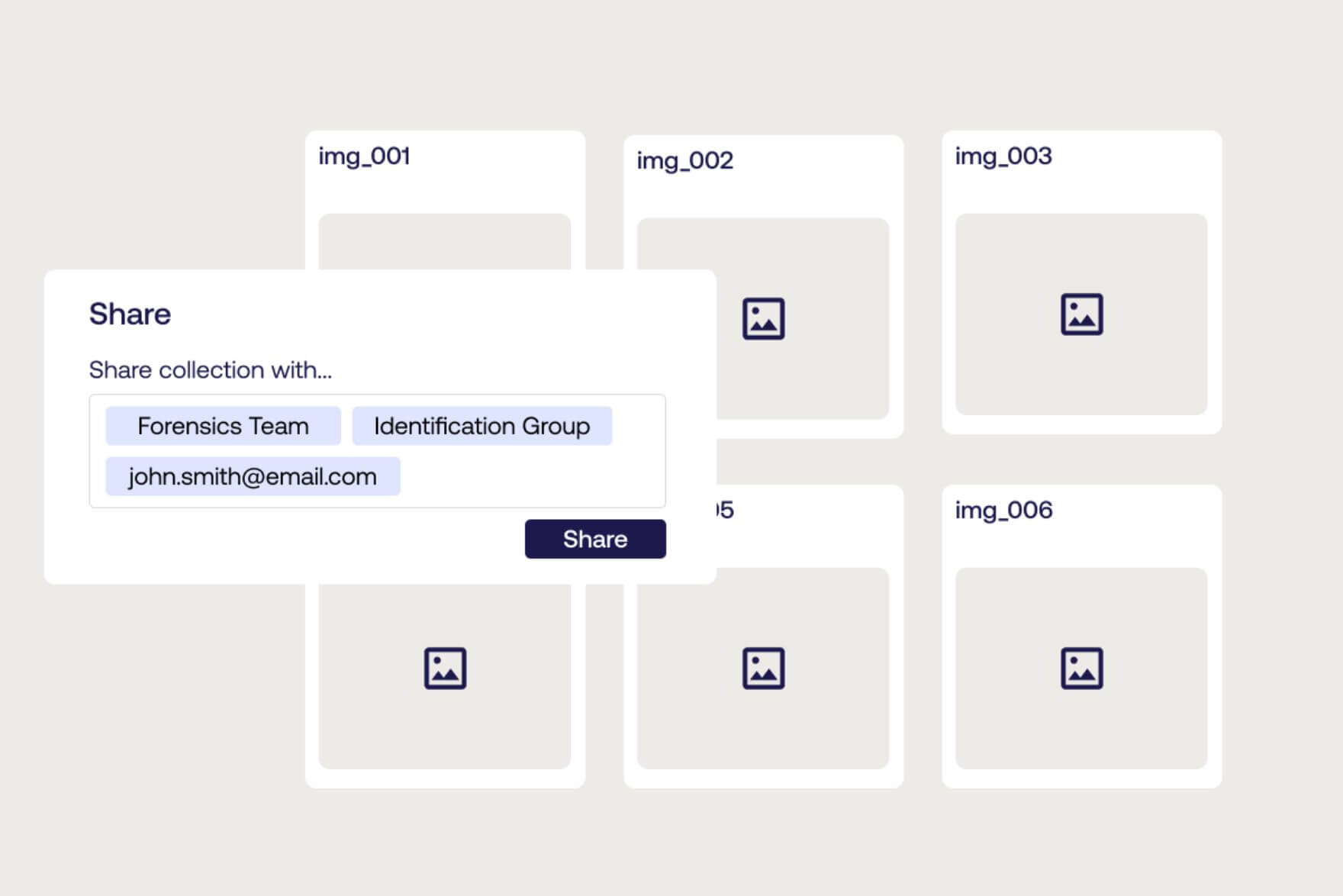
Digital Evidence Management
Digital Evidence Management describes a specific use of a Digital Asset Management solution in fields such as law enforcement and defense agencies, courts, or legal firms.
DAM systems provide a secure and organized repository for storing and managing digital evidence, including photos, videos, documents, and audio files. These systems ensure that evidence is easily accessible to the right people – and only the right people, properly categorized, and maintained with integrity.
Features like configurable thumbnails, access permissions, and detailed audit trails help maintain the chain of custody and ensure that digital evidence is handled in accordance with legal and regulatory standards. This not only optimizes the process of managing digital evidence but also enhances the ability to present accurate and reliable evidence in legal proceedings.
By integrating with other law enforcement technologies, DAM systems streamline workflows, improve case management, and ultimately contribute to more effective law enforcement operations.
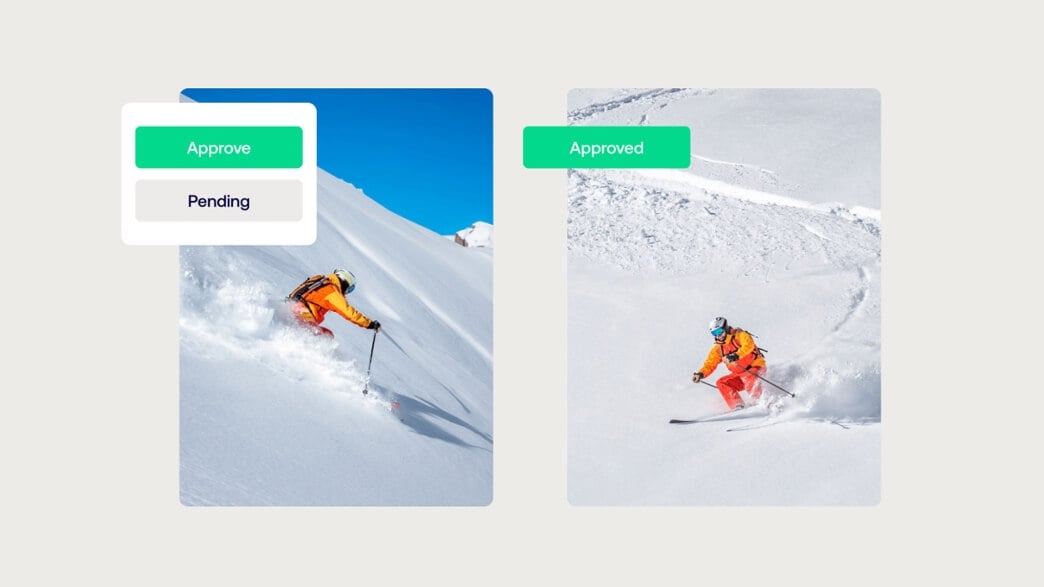
Brand Management
Effective brand management and streamlined content operations are crucial for organizations striving to maintain brand consistency and meeting the increasing demand for digital content across various platforms.
A DAM system centralizes all company assets and brand guidelines, enabling effective review workflows and instant access to approved assets to relevant groups and even the public. This ensures unified messaging and consistent brand identity across all digital channels.
By integrating with creative and productivity tools, DAM solutions optimize workflows, reduce manual processes, and enhance productivity. As a result, teams can focus better on strategic tasks. Ultimately, it provides a unified customer experience with the brand and improves overall efficiency.
Sales enablement
Sales teams need easy access to the latest brand assets and training materials to do their job. Sales materials are often stored in various locations. This can make it difficult for sales reps to locate and share them with potential buyers.
DAM systems streamline the sales enablement process by centralizing all sales collateral and training materials, making it easy for sales reps to engage with and use the materials to prospect and close deals. They also often include notification capabilities to alert sales teams when new content is available, ensuring that all sales interactions are on-brand and cohesive.

Digital Asset Management integrations
Integrating your DAM system with your other tools maximizes its value and streamlines content workflows across various business functions.
Integrations connect the DAM system with other essential tools and platforms, creating a more cohesive and efficient digital ecosystem. You can easily add connectors and integrations with pre-made plugins, or create custom integrations using an open API.
- Creative tools: Common integrations include popular creative tools like Adobe Creative Cloud, which allow creative teams to design, edit, and save assets directly from their preferred software.
- Productivity tools: Additionally, integrations to productivity tools such as Microsoft Office enable users to seamlessly access and insert digital assets directly from within their documents and presentations without needing to switch between systems.

- Content Management Systems (CMS) like Optimizely, Sitecore, WordPress, or Typo3 benefit from DAM integrations for seamless publishing and distributing digital assets to websites and blogs.
- Product Information Management (PIM) systems like inriver and e-commerce platforms like Shopify also leverage DAM integrations to provide up-to-date product images and promotional materials.
These integrations assist teams in collaborating effectively and maintaining brand consistency. They provide easy access to the latest digital assets within their tools. This helps teams work together more efficiently and ensures that they are using the most current brand assets.
Why the management of digital assets is important today
Several market trends contribute to the growing adoption of DAM across industries to build competitive advantage:
Digital transformation
Organizations undergoing digital transformation rely on DAM for managing the growing volume and complexity of digital assets. DAM systems provide scalable infrastructure for storing, organizing, and distributing digital content across global teams and platforms.
Remote work and collaboration
The shift towards remote work arrangements is increasing the demand for cloud-based DAM solutions. SaaS-driven DAMs enable teams to collaborate effectively, access assets from any location, and maintain productivity without physical constraints.
This flexibility is essential for modern organizations adapting to remote work trends and global operations.
Omnichannel Content Distribution
DAM systems help deliver content consistently on different digital platforms like websites, social media, mobile apps, and marketing materials.
By centralizing asset management, DAM ensures that all channels adhere to brand guidelines and deliver a cohesive brand experience to customers across touchpoints.
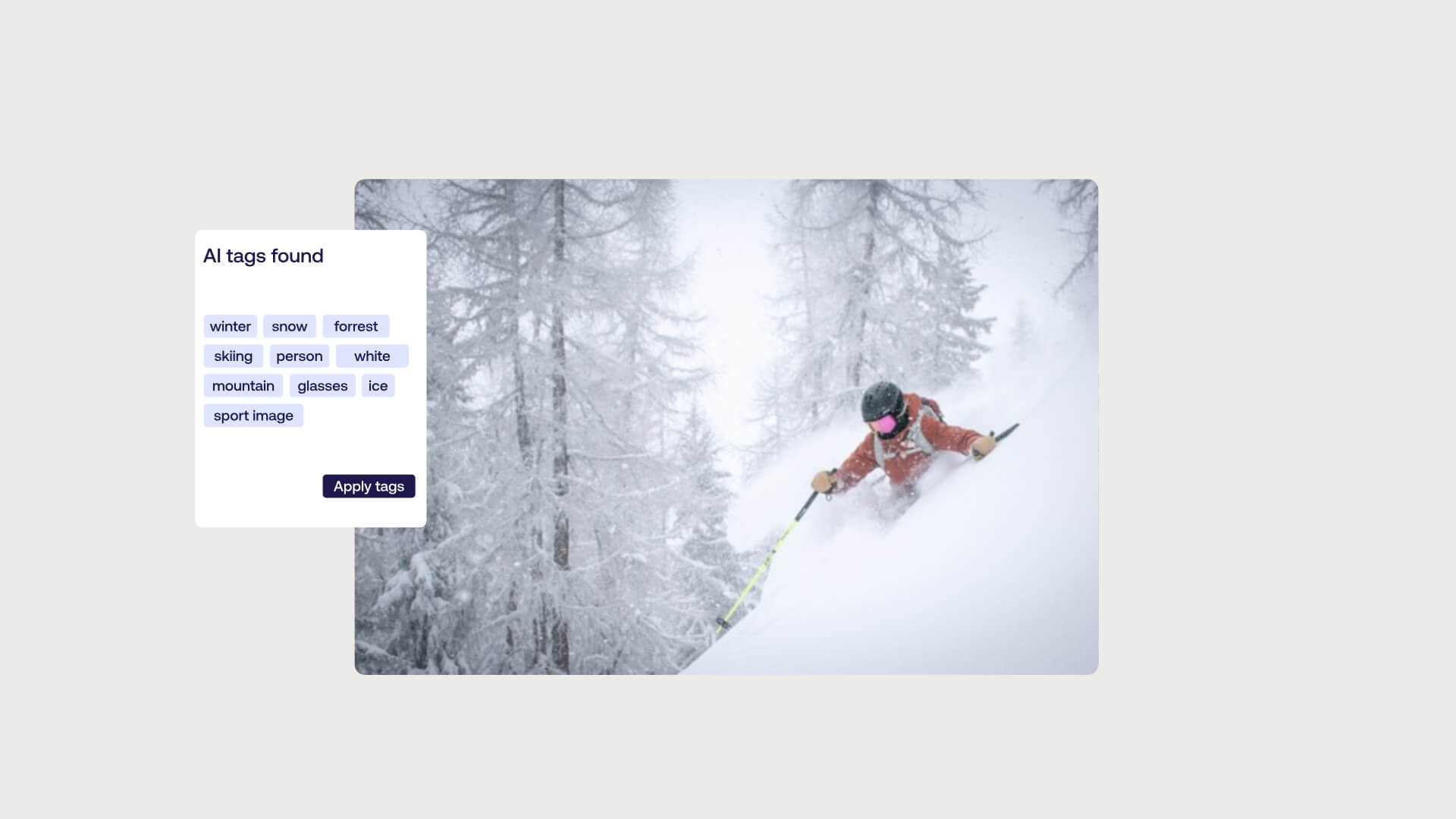
Scalability and flexibility
As companies grow, the volume of digital assets increases too, making manual management cumbersome and time-consuming.
With DAM and thorough metadata governance, growing file collections are not an issue. Workflows as well as metadata population scale independent of the number of files involved, thanks to tools like AI-powered Auto-Tagging.
Benefits of a cloud-based DAM
Additionally, using a cloud-based DAM solution further enhances scalability with some key benefits, such as:
- Cloud solutions offer virtually unlimited storage capacity that can scale with the company's needs. This eliminates the need for a significant upfront investment in physical IT infrastructure.
- Cloud-based DAM systems update automatically, giving organizations new features and security without manual maintenance.

Digital Asset Management trends
Current developments in DAM show clearly that a new era – the era of DAM 3.0 – has begun. A DAM is no longer merely an image bank, it evolves into the central system of a company’s content operations. It is vital that it seamlessly integrates with various software like PIM, CMS, and other important business systems.
In the digital age, remote work, and increased need for flexibility, DAM systems come with power to improve operational efficiency. This transformation prioritizes streamlined workflows and value-driven features, aiming to boost ROI and establish DAM as a strategy rather than a mere system for storing images. Ultimately, DAM 3.0 empowers organizations to thrive in a complex digital landscape.
Buying Digital Asset Management
Selecting the right Digital Asset Management software for your organization is a pivotal decision that directly impacts productivity, efficiency, and ultimately revenue.
Navigating the software market and all its vendors and choices can be challenging. From finding ways to solve your company’s specific challenges to pinpointing technical requirements, exploring the market, and securing internal support for the purchasing project – making sure every decision is well-informed and based on sound research is key for setting your organization up for long-term success.
Want a clear guide for your buying process? Download our The ultimate DAM buyer's guide ebook to find out:
- What to know before investing in a new DAM
- How to successfully navigate the best options on the market
- How to win over key stakeholders in your organization

Book a demo
Do you want to enhance how you work with your files? Book a meeting with one of our experts and find out how we can set you up for success.
